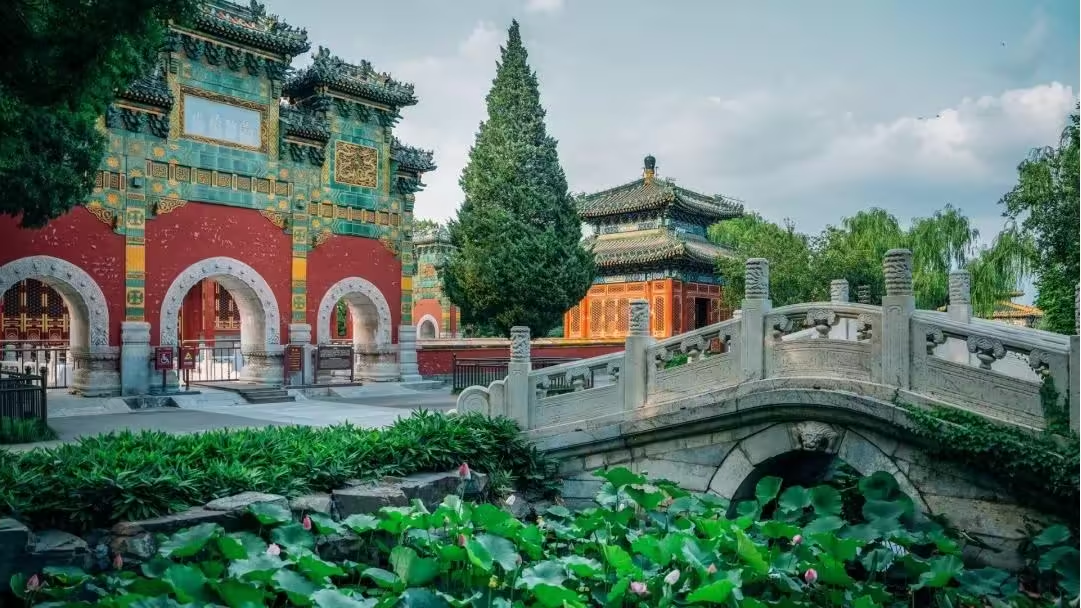Beihai Park, one of China’s oldest and best-preserved classical imperial gardens, is a treasure trove of cultural history and natural beauty. This travel journal outlines an optimal route for exploring the park without unnecessary detours, ensuring you experience its highlights efficiently. Whether you’re a history buff, nature lover, or simply looking for a peaceful retreat, Beihai Park offers something for everyone. Follow this guide to make the most of your visit to this stunning historical site.
Optimal Route for Exploring Beihai Park
Recommended Route: Enter through the North Gate → Jingxin Zhai (Tranquil Heart Studio) → Xitian Fanjing (Western Heaven Scenic Spot) → Nine-Dragon Wall → Kuixue Hall → Five-Dragon Pavilion (take the ferry) → Yilan Hall → White Pagoda and Yong’an Temple → Exit through the South Gate → Round City
- Jingxin Zhai (Tranquil Heart Studio) [静心斋]: This was the study room of the crown prince, featuring rockeries, bridges, and flowing water in a picturesque setting.
- Xitian Fanjing (Western Heaven Scenic Spot) [西天梵境]: Home to the Daci Zhenru Hall, which contains Ming Dynasty nanmu wood.
- Nine-Dragon Wall [九龙壁]: One of only three nine-dragon screens in China, and the only one with dragons on both sides.
- Kuixue Hall [快雪堂]: A place to appreciate calligraphy, with three connected courtyards.
- Five-Dragon Pavilion [五龙亭]: Five square pavilions connected by a dragon-shaped corridor, ideal for fish watching and moon gazing.
- Qionghua Island [琼华岛]: Although the hill is not too high, it’s manageable for both the elderly and children. At the top stands the White Pagoda of Yong’an Temple.
- Yilan Hall [漪澜堂]: A place for the imperial family to relax, dine, and sleep, with a beautifully curved corridor.
- Round City’s Three Treasures [团城“三宝”]: Includes Kublai Khan’s giant wine jar, a white jade Buddha, and an ancient pine tree honored by Emperor Qianlong.
- Haopu Jian (Haopu Ravine) [濠濮间]: A secluded and serene area where water and mountains are in perfect harmony.
- Huafang Zhai (Painting Boat Studio) [画舫斋]: A palace built according to Ouyang Xiu’s “Record of the Painting Boat Studio.”
Additional Tips and Routes
You can reverse the recommended route, entering through the South Gate and exiting through the North Gate.
Expanded Route: If you prefer not to take the ferry at the Five-Dragon Pavilion, return to the North Gate and walk along the lake’s east bank to visit Huafang Zhai and Haopu Jian before crossing the bridge to Qionghua Island and continuing the tour.
For those with more time and energy, enter through the West Gate and exit through the South Gate for a full-circle tour of the park.
Useful Tips for Your Visit
A joint ticket allows you to enter the park twice on the same day. However, you can still visit Qionghua Island without it.
There are many stairs leading up to the White Pagoda from Yong’an Temple, but the climb is easier from the east or west sides.
The White Pagoda is illuminated on Friday and Saturday nights.
Avoid entering or exiting through the East Gate unless you’re visiting Jingshan Park, as taxis are scarce and the metro station is far away.
From April to October, you can enjoy a boat ride on the lake.

